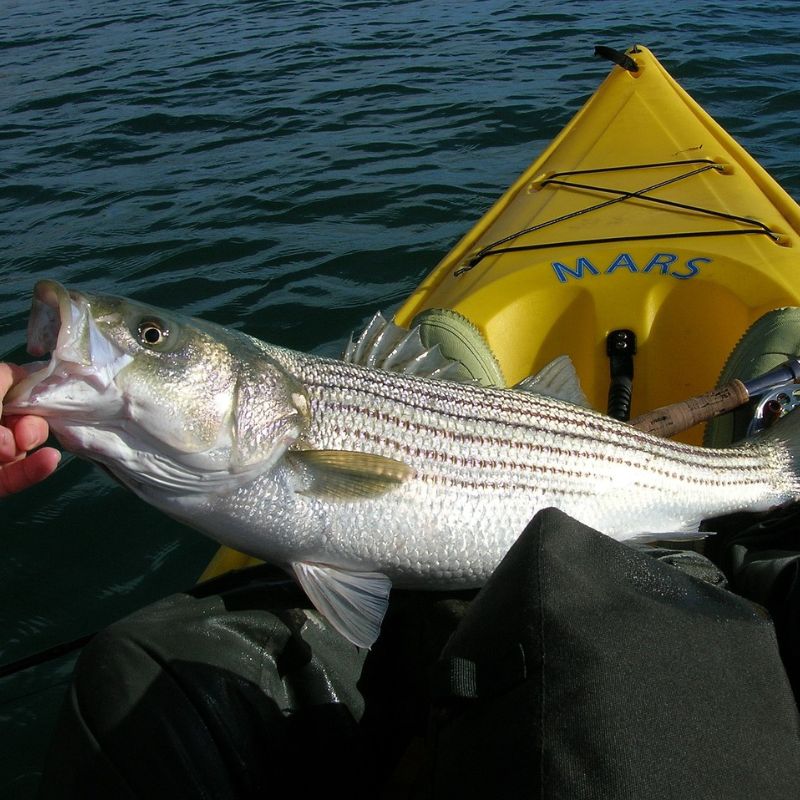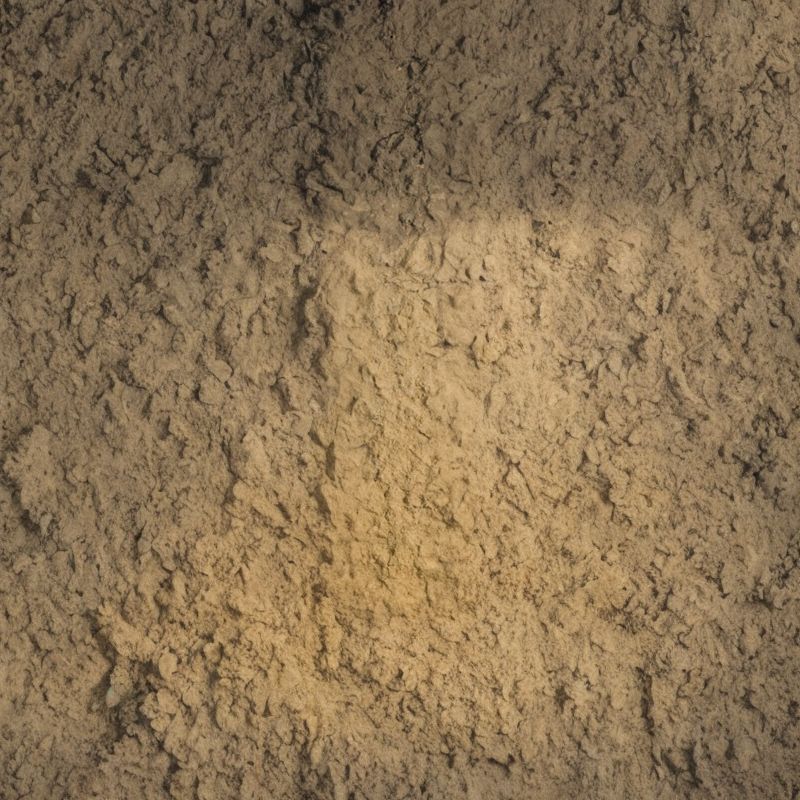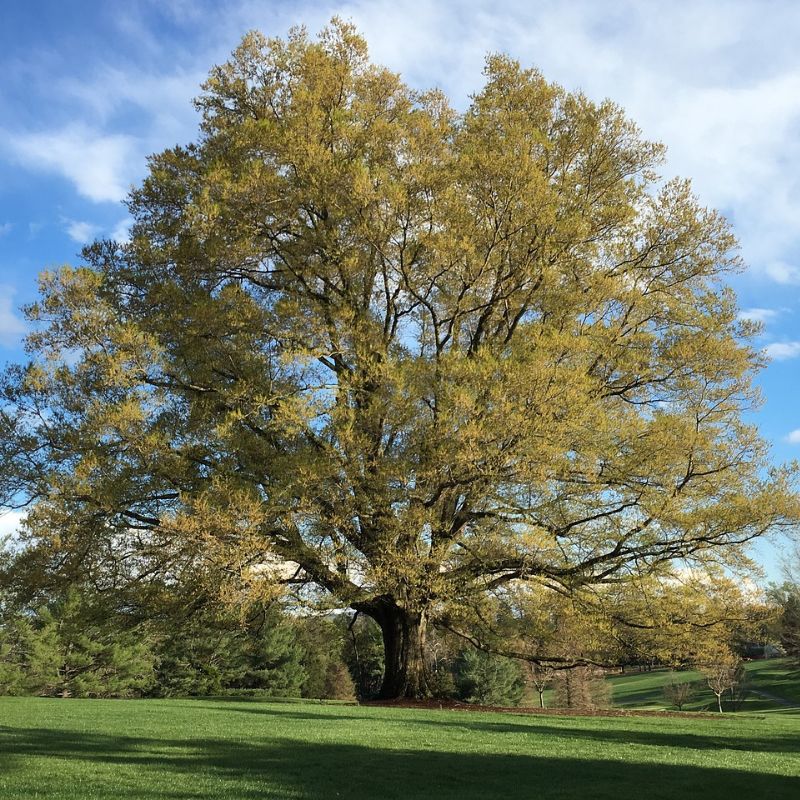Explore the Fascinating History of Maryland
Take our Maryland Trivia Quizzes for a Chance to Win a 6-Month Subscription to History By Mail!

The History of Maryland
Journey Through Maryland Trivia
Welcome to our Maryland history and trivia page, presented by History By Mail. Join us as we embark on a journey through the captivating past and cultural tapestry of the Old Line State. From Native American civilizations to European exploration and the modern era, we'll explore Maryland's hidden gems and challenge your knowledge with entertaining quizzes. Let's uncover the rich history and intriguing trivia of Maryland together.
Maryland, known as the Old Line State, is a land of extraordinary history and diverse landscapes. From the indigenous tribes who first inhabited the region, such as the Piscataway, Nanticoke, and Powhatan, to the impact of European colonization and the establishment of settlements, Maryland holds a captivating legacy. From the bustling city of Baltimore to the picturesque Chesapeake Bay and rolling hills of the Piedmont, the state showcases a blend of cultures, natural beauty, and a deep connection to its Native American and colonial roots.
Join us as we unravel the intriguing history and trivia of Maryland, delving into its pivotal role in American history, its contributions to maritime commerce, and the fascinating stories that make it a unique and cherished part of our nation's heritage.
Facts about Maryland
State Abbreviation: MD
Capital: Annapolis
Name Origin: Maryland was named after Queen Henrietta Maria of England. She was married to King Charles I, who granted permission for Maryland to become a colony.
Nickname: Free State; Old Line State
Statehood: April 28, 1788 (7th State)
State Motto: "Fatti maschii, parole femine" (Manly deeds, womanly words)
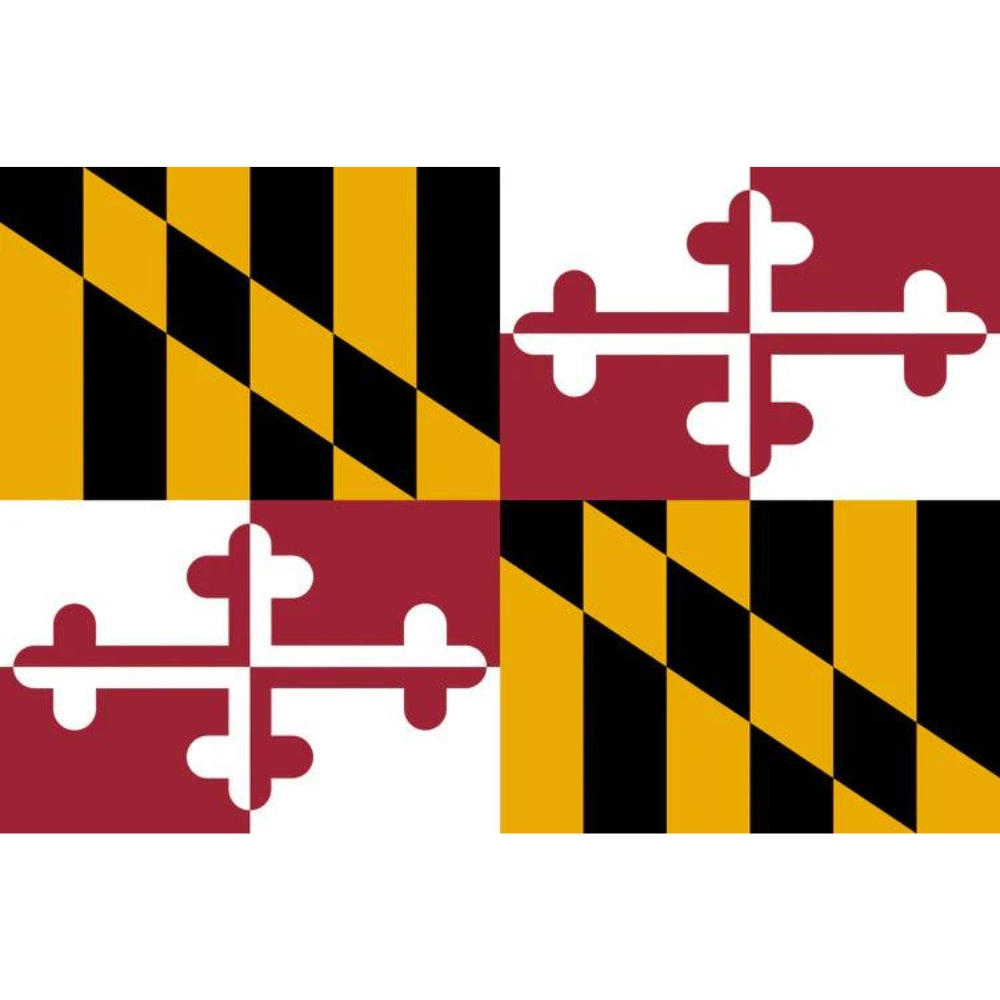
Maryland's Flag
The state flag of Maryland is a distinctive and recognizable symbol that reflects the state's rich history and unique heritage. The flag consists of a vibrant design divided into four quarters. The top left and bottom right quarters feature the familiar black and gold patterns of the Calvert family, which were taken from the coat of arms of the founding family of Maryland, the Lords Baltimore. The top right and bottom left quarters display the red and white cross bottony, representing the Crossland family, another prominent Maryland family.
The combination of the Calvert and Crossland colors and patterns creates a striking and eye-catching flag that stands out among the flags of other states. The flag's design dates back to the colonial period and has evolved over time, eventually becoming the official state flag in 1904.
Maryland's Great Seal
After Maryland attained statehood in 1788, the seal of Lord Baltimore remained in use by the state government for a number of years. It was formally reinstated in 1876. The seal presents a shield adorned with the Calvert and Crossland arms, topped by a crown and enveloped by an ermine robe. Positioned on one side of the shield is a depiction of a farmer, while a fisherman is depicted on the other. The state motto, "Fatti Maschii Parole Femine" (Strong Deeds, Gentle Words), as well as the phrase "Scuto Bonae Voluntatis Tuae Coronasti Nos" (With Favor Wilt Thou Compass Us As with a Shield), are also featured.
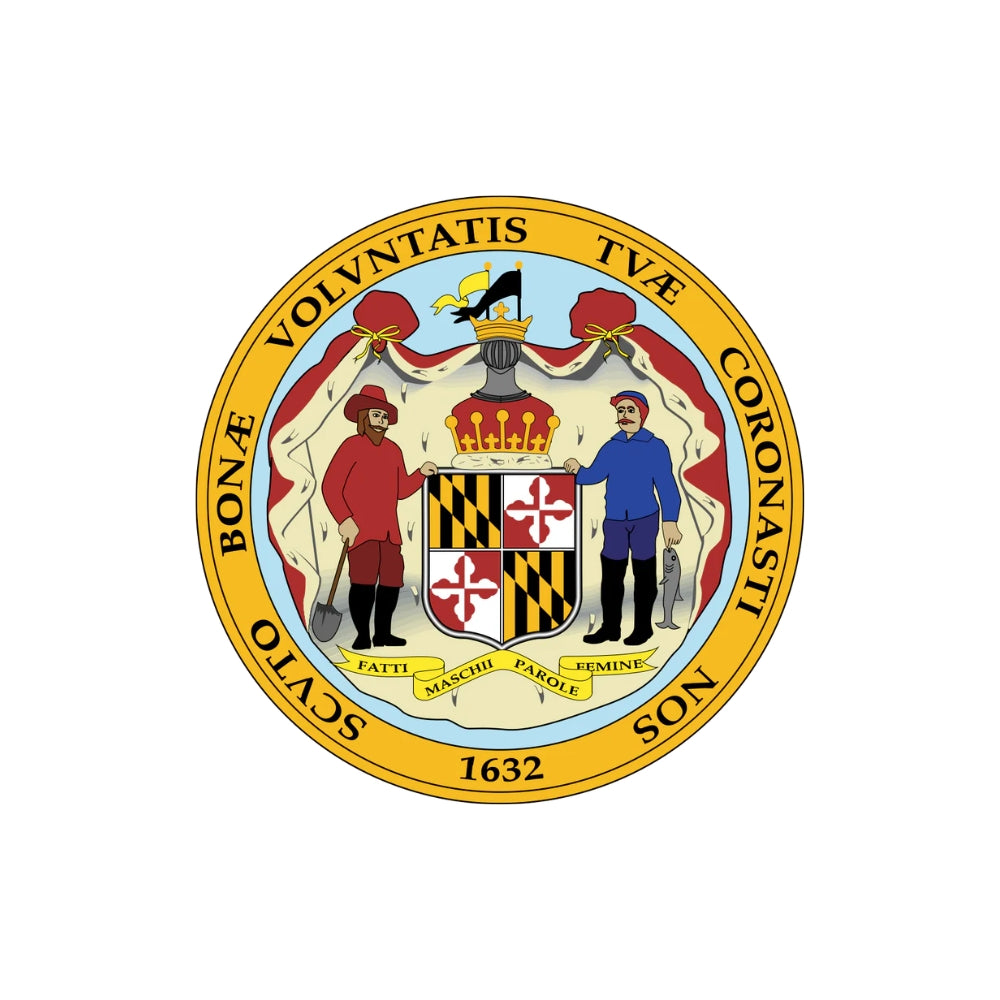
--- State Trivia #1 ---
History of Maryland
In the early 17th century, Captain John Smith ventured into Chesapeake Bay, marking the beginning of European exploration in the Maryland region. In 1632, King Charles I granted a royal charter to Cecil Calvert, Lord Baltimore, establishing Maryland as a proprietary colony. English settlers, including many Roman Catholics, arrived on St. Clement's Island in 1634, seeking religious freedom.
Religious tolerance flourished with the passage of the Toleration Act by the Maryland assembly in 1649, granting freedom of worship to all Christians. However, this period of religious freedom was short-lived, as a Puritan revolt from 1654 to 1658 curtailed these liberties.
During the early 19th century, Charles Mason and Jeremiah Dixon conducted a survey to establish Maryland's northern boundary with Pennsylvania from 1763 to 1767. In 1791, Maryland ceded land to form the District of Columbia, which would eventually become the nation's capital.
Maryland played a pivotal role in the War of 1812 when British forces attempted to capture Baltimore. The bombardment of Fort McHenry inspired Francis Scott Key to write the words of "The Star-Spangled Banner." Maryland remained in the Union during the Civil War, although it was a slave state. Consequently, many Marylanders fought on both sides of the conflict, resulting in divided families.
Maryland boasts an extensive coastline encompassing the Eastern Shore and Western Shore, with numerous estuaries, rivers, and the vast Chesapeake Bay. The Chesapeake Bay is renowned for its abundant seafood production, including oysters, crabs, clams, and fin fish. However, the region has faced challenges due to declining fish stocks resulting from increased development and pollution. In 2009, President Barack Obama signed the Chesapeake Bay Restoration and Protection Executive Order, aimed at preserving and revitalizing this vital ecosystem.
Agriculture in Maryland encompasses greenhouse and nursery products, poultry, dairy, eggs, and soybeans. The state's mineral resources include stone, coal, sand, gravel, cement, and clay.
Manufacturing industries in Maryland span food products, chemicals, computer and electronic products, transportation equipment, and primary metals. Baltimore, home to the renowned Johns Hopkins University and Hospital, serves as the nation's second-largest port in terms of foreign tonnage. Annapolis, the capital, is the esteemed location of the U.S. Naval Academy.
Maryland offers a range of popular attractions, including the Fort McHenry National Monument, Harpers Ferry and Chesapeake and Ohio Canal National Historic Parks, Antietam National Battlefield, and the National Aquarium, USS Constellation, and Maryland Science Center at Baltimore's Inner Harbor. Other notable sites include Historic St. Mary's City, Jefferson Patterson Historical Park and Museum, the U.S. Naval Academy, Goddard Space Flight Center, Assateague Island National Seashore, the Ocean City beach resort, and Catoctin Mountain, Fort Frederick, and Piscataway parks.
Maryland has been at the forefront of social progress, as it became the eighth state to legalize gay marriage with the passage of legislation in March 2012.
State Symbols
Fun Facts
- Go fish! Visitors to the National Aquarium can check out jellyfish, a living reef, dolphins, and sharks.
- Famous Marylanders include Francis Scott Key, who wrote the Star Spangled Banner; baseball player Babe Ruth; Jazz musician Billie Holiday; and civil rights activist Thurgood Marshall, who became the first African-American Supreme Court justice (or judge) in the United States.
- Visitors to the Harriet Tubman Underground Railroad National Park can explore the same land that Tubman crossed while guiding almost 70 people to freedom during the 1800s.
--- State Trivia #2 ---

Things To Do in Maryland
- Explore Historic Annapolis: Visit the charming capital city of Maryland and delve into its rich history. Take a stroll along the historic streets lined with beautifully preserved colonial architecture, visit the Maryland State House, tour the United States Naval Academy, and immerse yourself in the maritime heritage of this captivating city.
- Discover the National Aquarium: Located in Baltimore's Inner Harbor, the National Aquarium is a must-visit attraction in Maryland. Explore the stunning exhibits featuring a wide array of marine life, including dolphins, sharks, tropical fish, and mesmerizing coral reefs. Learn about marine conservation and enjoy interactive experiences for all ages.
- Visit Assateague Island: Head to Assateague Island National Seashore, a unique barrier island shared by Maryland and Virginia. Marvel at the untouched beaches, dunes, and marshes while observing the famous wild horses that roam freely in this natural paradise. Enjoy swimming, hiking, camping, birdwatching, and other outdoor activities in this serene coastal setting.
- Tour Antietam National Battlefield: History enthusiasts will appreciate a visit to the Antietam National Battlefield, located near Sharpsburg. Explore the site of the pivotal Civil War battle that took place in 1862, which marked a turning point in the conflict. Take a guided tour or explore the battlefield on your own, gaining insights into the battle's significance and the sacrifices made during this tumultuous time in American history.
- Indulge in Maryland's Crab Cuisine: No visit to Maryland is complete without savoring the state's famous crab cuisine. Whether it's enjoying a traditional Maryland crab feast with steamed blue crabs, relishing crab cakes made with locally caught crabmeat, or sampling other crab-inspired dishes, such as crab soup or crab dip, Maryland's culinary delights are sure to tantalize your taste buds and leave you craving for more.
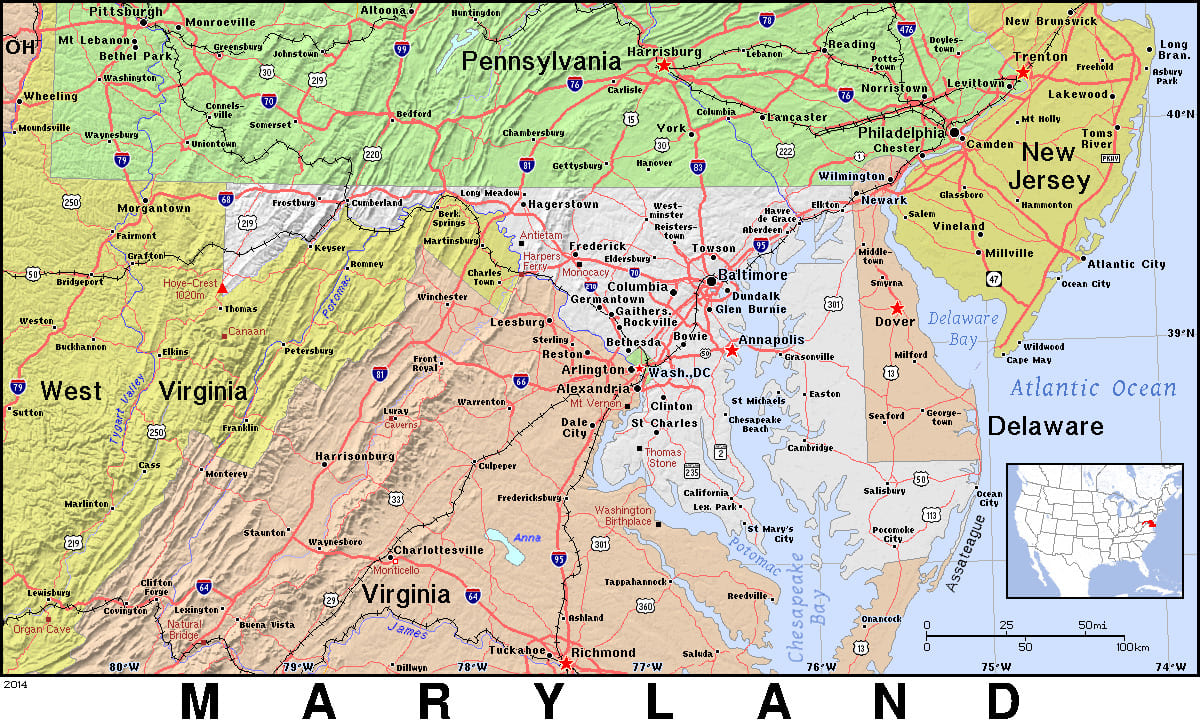
General Map of Maryland
Maryland, known as the "Old Line State," is a captivating destination located in the northeastern part of the United States. Renowned for its rich history, diverse landscapes, and vibrant cities, Maryland offers a wealth of experiences for visitors to indulge in. From exploring the historic streets of Annapolis, the state capital, to discovering the bustling city of Baltimore with its thriving arts scene and world-class museums, Maryland invites travelers to embark on a memorable journey filled with cultural treasures, natural beauty, and a deep connection to its colonial and maritime roots.
Famous People From Maryland
--- State Trivia #3 ---
FREQUENTLY ASKED QUESTIONS (FAQ) ABOUT MARYLAND
Maryland is often referred to as the "Old Line State." This nickname originated during the American Revolutionary War when Maryland troops, known as the "Maryland Line," held their ground against British forces, earning the respect of George Washington.
The Mason-Dixon Line was a boundary line drawn in the 1760s between Maryland and Pennsylvania to resolve a dispute over land boundaries. It later gained historical significance as the symbolic dividing line between the Northern and Southern states before the Civil War.
Maryland was a border state during the Civil War, meaning it didn't secede from the Union but had sympathies for both the North and the South. Its strategic location and transportation networks made it a contested region, with battles like Antietam being fought on its soil.
Edgar Allan Poe, the famous writer and poet, spent a significant portion of his life in Maryland. He was born in Boston, but he later lived in Baltimore, where he died under mysterious circumstances. The Poe House and Museum in Baltimore honors his legacy.
Related Resources
- Official Website of the State of Maryland: The official website provides information about the state government, services, resources, tourism, and more. Visit: https://www.maryland.gov/
- Visit Maryland: Explore Maryland's attractions, events, outdoor activities, and plan your trip. Visit: https://www.visitmaryland.org/
- Maryland State Archives: Discover Maryland's rich history, access historical records, explore genealogy resources, and learn about preservation efforts. Visit: http://msa.maryland.gov/
- Maryland Department of Natural Resources: Learn about Maryland's diverse natural resources, state parks, wildlife management, fishing and hunting regulations, and environmental initiatives. Visit: https://dnr.maryland.gov/
- Maryland Historical Society: Experience Maryland's history, exhibitions, collections, educational programs, and research opportunities. Visit: https://www.mdhs.org/
- National Aquarium (Baltimore): Visit the renowned National Aquarium in Baltimore, showcasing a variety of marine life and offering educational programs and exhibits. Visit: https://www.aqua.org/
- Fort McHenry National Monument and Historic Shrine: Explore the historic fort that inspired the writing of "The Star-Spangled Banner" during the War of 1812. Visit: https://www.nps.gov/fomc/index.htm
- Chesapeake Bay Maritime Museum: Discover the maritime heritage of Maryland and the Chesapeake Bay region through exhibits, boat tours, and educational programs. Visit: https://cbmm.org/
- Maryland Science Center: Visit the interactive science museum in Baltimore, featuring hands-on exhibits, planetarium shows, and an IMAX theater. Visit: https://www.mdsci.org/
- Antietam National Battlefield: Explore the historic battlefield in Sharpsburg, Maryland, where the Battle of Antietam took place during the American Civil War. Visit: https://www.nps.gov/anti/index.htm

